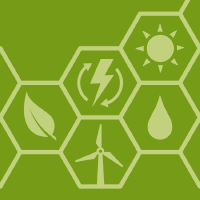Topic Editors



Nanoarchitectonics with Molecular and Materials Science: Materials for Energy, Environment, Bio, and Others (2nd Edition)
Topic Information
Dear Colleagues,
We are delighted to announce a submission call for the topic of “Nanoarchitectonics with Molecular and Materials Science: Materials for Energy, Environment, Bio, and Others (2nd Edition)”. This Topic is a continuation of the previously successful Topic “Nanoarchitectonics with Molecular and Materials Science: Functional Materials for Energy, Environment, Bio and Others”, which closed on 31 December 2022, and in which, 29 papers were published. Marking the post-nanotechnology era, the concept of nanoarchitectonics has been proposed to create functional materials using atoms, molecules, and nanomaterials as components (Molecules 2021, 26(6), 1621, Molecules 2021, 26(15), 4636, Nanomaterials 2021, 11(8), 2146, Int. J. Mol. Sci. 2022, 23(7), 3577, Materials 2022, 15(15), 5404). The nanoarchitectonics concept couples nanotechnology with diverse research fields, including materials science, supramolecular chemistry, and bio-related sciences to logically create functional materials from nanoscale units. In addition, given its conceptual generality, the can also be applied to other exciting research fields, including material synthesis, structural fabrications, sensing, catalysts, environmental remediation, energy production and storages, device fabrications, and biological/biomedical treatments. By including this emerging terminology, “nanoarchitectonics”, in paper titles and/or keywords, a re-consideration of these subjects can inspire the discovery of novel insights within interdisciplinary research fields.
Prof. Dr. Katsuhiko Ariga
Prof. Dr. Yann Molard
Prof. Dr. Fabien Grasset
Topic Editors
Keywords
- nanoarchitectonics
- supramolecular chemistry
- functional materials
- synthesis
- fabrications
- sensing
- catalyst
- environment
- energy
- biological
Participating Journals
| Journal Name | Impact Factor | CiteScore | Launched Year | First Decision (median) | APC | |
|---|---|---|---|---|---|---|

International Journal of Molecular Sciences
|
5.6 | 7.8 | 2000 | 16.3 Days | CHF 2900 | Submit |

Journal of Functional Biomaterials
|
4.8 | 5.0 | 2010 | 13.3 Days | CHF 2700 | Submit |

Materials
|
3.4 | 5.2 | 2008 | 13.9 Days | CHF 2600 | Submit |

Molecules
|
4.6 | 6.7 | 1996 | 14.6 Days | CHF 2700 | Submit |

Nanoenergy Advances
|
- | - | 2021 | 31 Days | CHF 1000 | Submit |

Nanomaterials
|
5.3 | 7.4 | 2010 | 13.6 Days | CHF 2900 | Submit |

MDPI Topics is cooperating with Preprints.org and has built a direct connection between MDPI journals and Preprints.org. Authors are encouraged to enjoy the benefits by posting a preprint at Preprints.org prior to publication:
- Immediately share your ideas ahead of publication and establish your research priority;
- Protect your idea from being stolen with this time-stamped preprint article;
- Enhance the exposure and impact of your research;
- Receive feedback from your peers in advance;
- Have it indexed in Web of Science (Preprint Citation Index), Google Scholar, Crossref, SHARE, PrePubMed, Scilit and Europe PMC.
Related Topic
Published Papers (4 papers)
Planned Papers
The below list represents only planned manuscripts. Some of these manuscripts have not been received by the Editorial Office yet. Papers submitted to MDPI journals are subject to peer-review.
Title: Layered Nanoarchitectonics: Method for Everything in Layered Structures
Authors: ARIGA Katsuhiko
Affiliation: Research Center for Materials Nanoarchitectonics (MANA), National Institute for Materials Science (NIMS), Tsukuba, Japan

